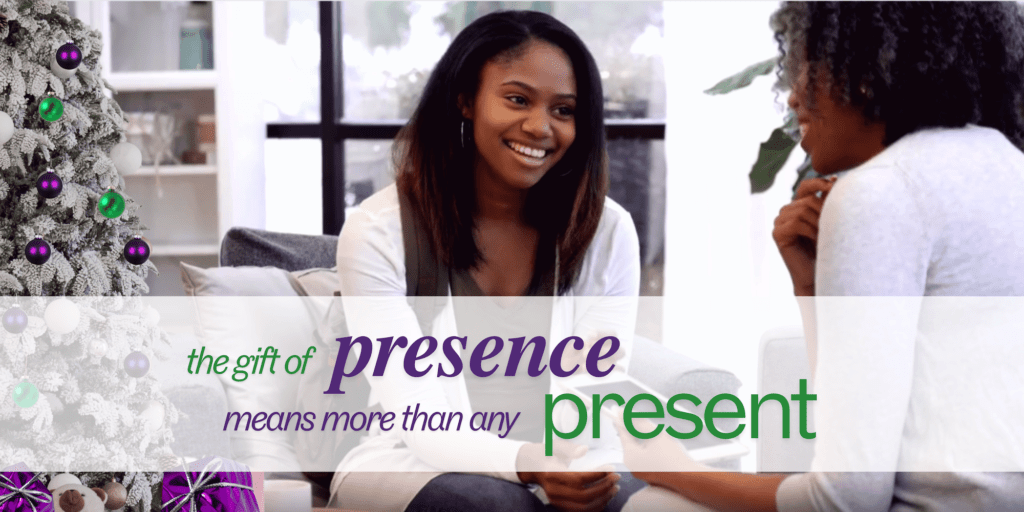Give Thanks: The Most Simple Well-Kept Secret to Living a Fuller Life
With Thanksgiving around the corner, it seems like a good time to talk about the practice of giving thanks. One day a year we gather as families, eat an abundance of comfort food, and watch football. We take a little time to contemplate the blessings and relationships in life. For many, this is a favorite holiday.
Each moment is filled with gifts, as well as things that are lacking. Unfortunately, the stuff that is missing often creates a lens that makes it difficult to see what we already have. In his uplifting TED talk, Shawn Achor discusses how our culture has “pushed happiness over the cognitive horizon.” (Achor, 2012) We think “I will be happy, when the cool kids notice me, when I graduate, get that promotion, lose weight, get married, have a child, ____________ (fill in the blank).” But, we know somewhere deep down there will always be another promotion, challenge in marriage, and worries about our children. Happiness seems just beyond reach. One step away. Our focus on the future robs us of the ability to find joy in the things we already have.
Brené Brown adds another issue to the conversation of happiness. When we allow ourselves to feel joy and care deeply in a moment, we become vulnerable to loss. She names this fear “foreboding joy.” (Brown, 2012)
“In our culture of deep scarcity – of never feeling safe, certain, and sure enough, joy can feel like a setup. We wake up in the morning and think, ‘Work is going well. Everyone in the family is healthy. No major crises are happening. The house is still standing. I’m working out and feeling good… this is bad. This is really bad. Disaster must be lurking around the corner.’”
Brown found that the practice of gratitude is the antidote to foreboding joy. “Gratitude is how we acknowledge that there is enough and that we are enough… Joy comes to us in moments – ordinary moments. We risk missing out on joy when we get too busy chasing down the extraordinary.” Gratitude is in the present. It is about savoring what it is to be human. We see what we have in the moment and let ourselves feel.
We have a natural tendency to focus on what goes wrong. Our brains have a built-in survival mechanism wired to detect danger. Our well-oiled threat detection system responds instantaneously, flooding our body with cortisol and adrenaline (fight/flight/freeze). When a car swerves in front of us, this internal mechanism leaps into action, allowing us to slam on the brakes and get control without thinking. In his book, Flourish, Martin Seligman talks about how the practice of counting our blessings broadens out our perspective. (Seligman, 2011) We can add to our powerful threat-detection system with a gratitude practice. When we count our blessings, we become detectives on the lookout for positive moments we might miss because we are always scanning for threats. He talks about how he added an assignment recently for his students:
“Every night for the next week, set aside ten minutes before you go to sleep. Write down three things that went well today and why they went well… Next to each positive event, answer the question, ‘Why did this happen?’”
After 45 years of teaching, Seligman describes the outcome of the assignment: “I have never seen so much positive life changes in my students or heard the sweetest words a teacher can hear – life changing – used so often to describe the course.”
In just a few weeks, we will celebrate together the blessings of this year. What if we took this opportunity to expand this practice into the rest of the year? A gratitude practice expands our focus, opens our hearts to experience joy, and reminds us that this moment is our life.
Here are some ideas to expand the practice of Thanksgiving into life:
- At the end of the day during mealtime, share together with a good friend, spouse, or family members a moment of gratitude for the day.
- Write down three things that you are thankful for in a journal at the end of the day. Remember to let yourself feel the feeling of thanksgiving that you felt in that moment.
- Write a “Thank You” note to someone each day. Allow yourself to feel the blessing of this person in your life as you write the note.
- Come up with creative ways to express thanksgiving with friends and loved ones. For example, use a white tablecloth for Thanksgiving dinner. During the meal, pass around a marker and have everyone write the date and a blessing (be sure to put some newspaper under the cloth).
Be Thankful
Be thankful that you don’t already have everything you desire,
If you did, what would there be to look forward to?
Be thankful when you don’t know something
For it gives you the opportunity to learn.
Be thankful for the difficult times.
During those times you grow.
Be thankful for your limitations
Because they give you opportunities for improvement.
Be thankful for each new challenge
Because it will build your strength and character.
Be thankful for your mistakes
They will teach you valuable lessons.
Be thankful for your mistakes,
They will teach you valuable lessons.
Be thankful when you’re tired and weary.
Because it means you’ve made a difference.
It is easy to be thankful for the good things.
A life of rich fulfillment comes to those who are also thankful for the setbacks.
Gratitude can turn a negative into a positive.
Find a way to be thankful for your troubles,
and they can become your blessings.
Author Unknown
Seligman, Martin. (2011). Flourish: A Visionary New Understanding of Happiness and Well-being.
Contributed by:












